All relevant religious holidays in Spain have a reflection in the food. Spain was a strictly Catholic country for centuries with the liturgical periods tightly marking the habits, and with food rules that had to be obeyed. Though nowadays the religious rules regarding food, like fasting on certain days during Easter, are largely overlooked, funnily enough the food traditions remain and making torrijas for the Easter celebration, usually a labor holiday lasting four days, is one of them. Also you can find them in pastry shops, restaurants and bars all over the country during this period. Torrijas are apparently a rather ancient recipe, as they first appear quoted by a Spanish author in the 15th Century. Now… listen to yours truly pronouncing this funny word here.
Torrijas are a very simple dish, very similar to French toast and pain perdu, most often made by soaking slices of stale bread in sugared milk, also flavoured with cinnamon or vanilla, then bathed in beaten egg, fried in oil and sprinkled with a mixture of sugar and powdered cinnamon. In fact, another one of the many ways developed by the not so well-off to use up bread leftovers. Though today bread especially baked for the purpose of making torrijas can be bought. As it usually happens with most traditional dishes, the perfect ingredients and method are controversial matters, torrijas made with sweet wine instead of milk and others bathed in syrup after frying being also popular. And of course, the best torrijas are always one’s mother’s, no discussion about it!
- 4 cups (1 liter) milk
- 3 tbsp sugar (or honey if you prefer)
- 1 stick cinnamon
- 2-3 medium eggs
- Sunflower oil or other insipid oil for frying
- Sugar and cinnamon for sprinkling
- Slice the bread into 1 inch (2.5cm) slices. Arrange them on a shallow dish that can hold the milk.
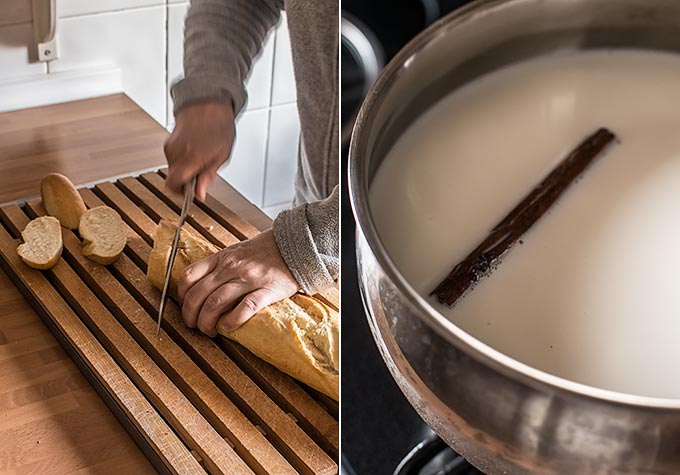
- Pour all the milk in a saucepan with the sugar and the cinnamon stick, bring to a boil. Turn off the heat the moment it starts to boil and leave to infuse for 5 minutes.
- Pour the milk on the bread and let soak for 30 minutes.
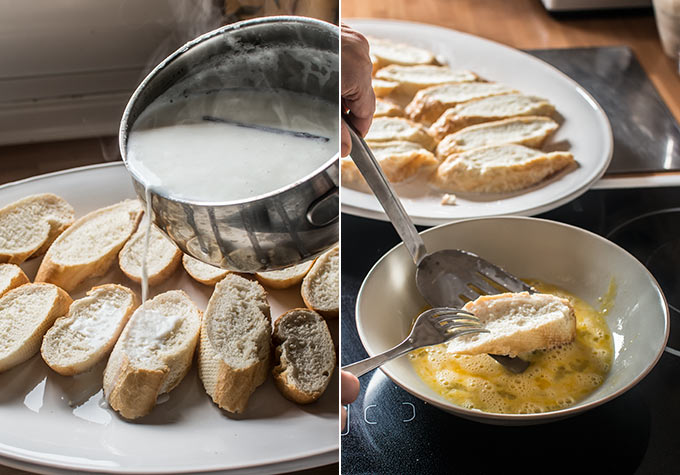
- Beat the eggs in a plate large enough to hold at least one torrija.
- Heat the oil to medium in a large frying pan that can hold several torrijas at the same time. With a spatula (the bread might be overly soft), carefully transfer the soaked slices one by one into the egg and turn them to coat. Then transfer the slices to the hot oil.
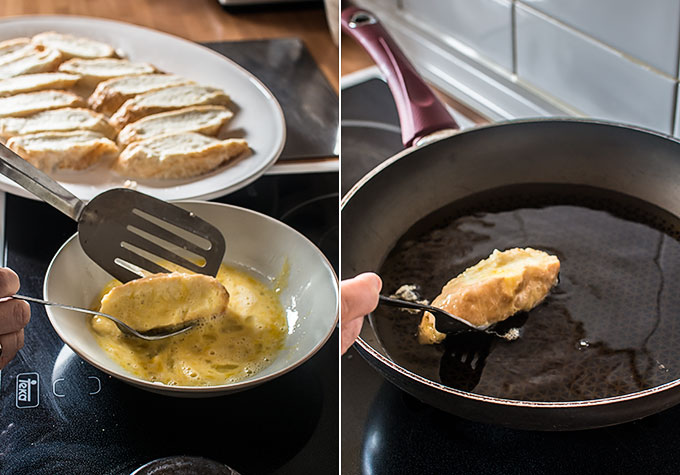
- Fry for a couple of minutes on each side, until brown.

- Take out to a dish lined with a paper towel and thoroughly sprinkle with sugar and cinnamon. Enjoy warm or cold.
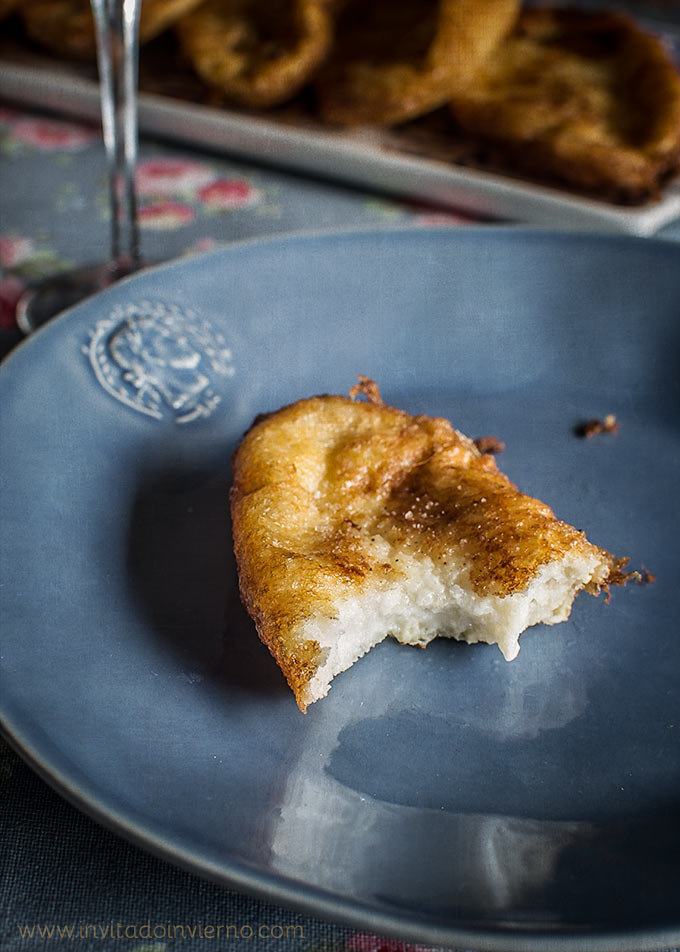
Tips for superb torrijas: I find the result is best when you let the bread go very stale before soaking, so that the slices can soak as much milk as possible and yield a very creamy inside afterwards. So what I do sometimes is to slice the bread before letting it dry overnight, to assure that the loaf dries thoroughly (and because slicing is a lot easier while the bread is soft). And I recommend you make sure that the slices soak as much milk as feasible, so it is best to check how they are doing within say 20 minutes after pouring the warm milk on them, because you can always add a little more if the slices have soaked up all the liquid in the dish, say another cup. For me these are indeed the secrets for a lusciuosly creamy interior that looks and tastes more like pastry cream than like plain milk-soaked bread. Because that is what I really love about torrijas, that the alchemy of soaking and frying metamorphoses the simplest ingredients into something different and truly delicious.
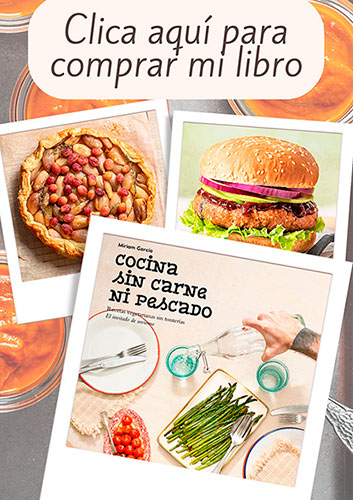
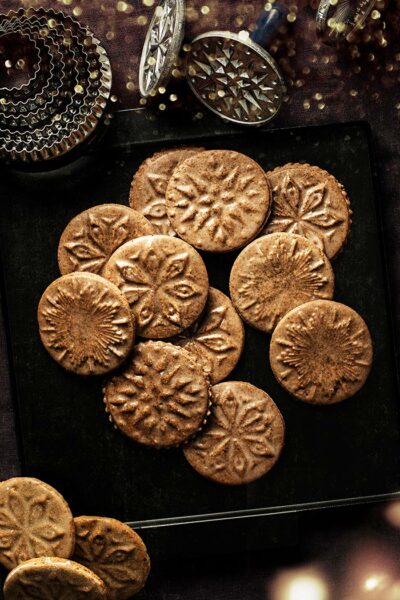
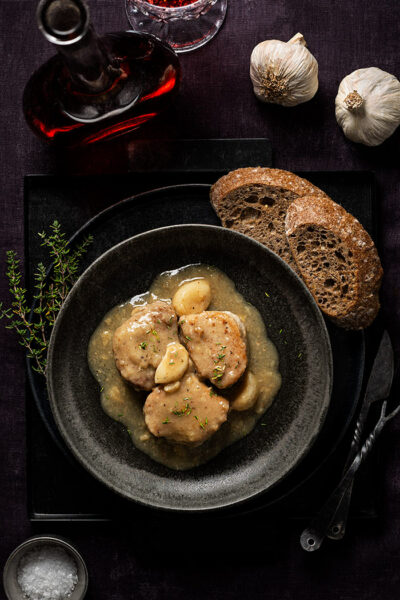
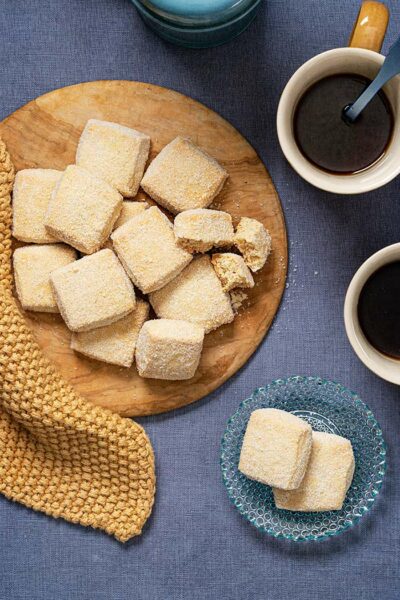
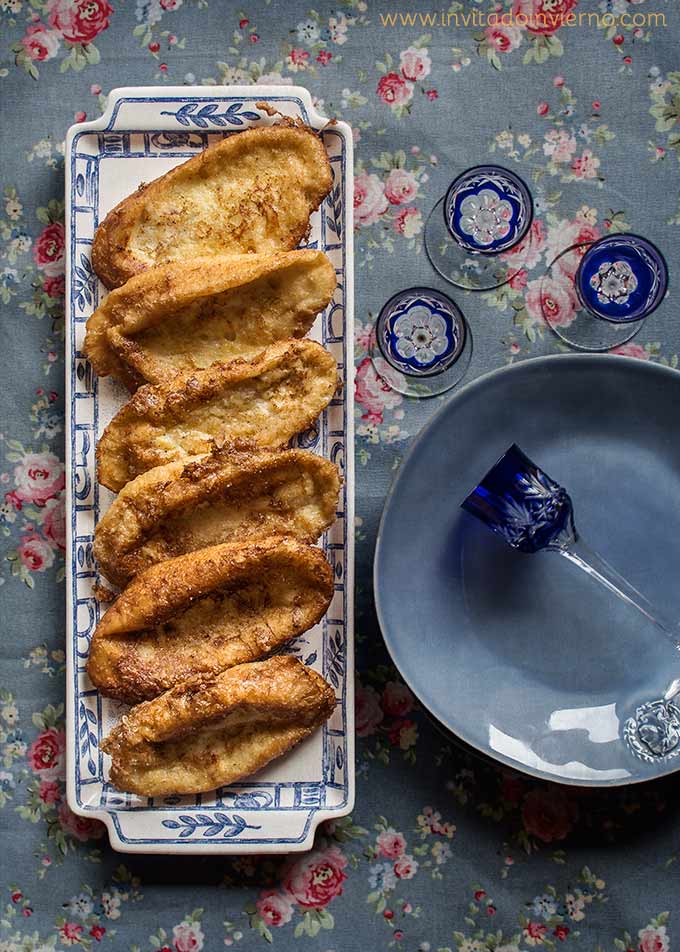
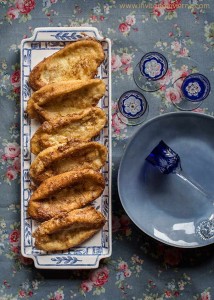

Well, I do think that perhaps the best thing to come out of religious traditions are wonderful foods such as this. Sigh, listening to you pronounce the word (fun!) only reminds me how I will never have good Spanish pronunciation, as I am physically incapable of rolling my r’s.
jooo, no sé que ha pasado, había escrito largo y tendido y se ha borrado todo!:( el ordenador sigue confabulando contra mí!
No sabía que publicabas en inglés a veces antes, creía que era la versión inglesa del invitado de inglés y que los posts salían con el «delay» de la traducción.
Me encantan las torrijas…las que tu dices que parecen más crema pastelera que pan remojado pero casi ya seco (pasa demasiado!) y estoy totalmente de acuerdo contigo en que uno de los trucos es usar pan del día anterior…y tu truco de dejarlas cortadas antes me parece genial! Es como lo de secar la pasta choux para que absorba más huevos y así enriquecerla más o preparar un salmorejo con pan seco para que absorba más jugo de tomate y así se necesite menos pan y sabrá más a tomate con la misma textura…No me dejes, que me enrollo!
Yo también suelo dejar enfriar la leche infusionada porque tengo la sensación de que absorbe más lentamente pero absorbe más (quizás solo soy tiquis…no lo he comprobado empiricamente) pero aí que el pan es más manejable antes de pasarlo por huevo. Y a veces sustituyo parte de leche por nata…ejem, más pa el cuerpo!
Y síii las torrijas de mi madre son las mejores 😉 ja ja ja
El año pasado publique la versión de Berasategui de torrijas con brioche y caramelizadas, en vez de fritas por si te animas a probarla. Un beso
Ay, Que ricas se ven estas torrijas. La verdad no las he probado nunca, me haz tentado completamente ha hacerlas. Te cuento que tenemos algo parecido en argentina, le decimos budin de pan. Me ha encantado esta receta, que delicia para las Pascuas!
Abrazos y Felices Pascuas para ti tambien,
Aldy.
Beautiful! Thank you for sharing this tradition. Happy Easter!
That looks lovely and delicious, Miriam. Happy Easter!
http://spoon-and-chopsticks.blogspot.com/
This looks like a wonderful breakfast tradition. Yummy! Have a wonderful Easter!
te puedes creer que me acabo de enterar que tienes blog en inglés? estoy empanada, he visto tus torrijas en foodbuzz, le he dado a buzzear, y aquí he llegado… no solo cocinas de maravillas, sacas fotos geniales, y no sé cuantas cosas más… encima es que hablas inglés como una nativa! Marry me please!
que sepas que cuando no sepa como se dice algo en inglés voy a venir a mirar aquí…
It just sounds perfect for an Easter celebration.
Esta receta me mato de nostalgia..Cuando era chica, en los fines de semana frios y lluviosos de invierno, mi papa preparaba torrijas, que comiamos acompañadas de un mate, bien calentito también..Lo que daria hoy por revivir esos momentos! Gracias por el recuerdo!
omg! thanks so much for introducing me to this!
Miriam I want to give you a big air hug for introducing me and my family to this recipe. I made it this morning for my itty bitty and I and we both absolutely loved it! I am blogging about you and this recipe on Friday morning if you’d like to check out my blog then. I didn’t share the recipe but directed others to your blog. Thank you again! This will be making our breakfast rotation. Yummy!
Trix: I totally agree with you… not about the r’s, about the other matter, lol.
Colette: pues es que esto es un dilema!! Como ahora escribo articulillos para la revista esta Honest Cooking (que luego publico aquí también), pues hago cosas muy typical Spanish que no me apetece publicar en el blog en español. Así que tengo un lío… Pues buscaré tus torrijas de Berasategui!
Aldy: un abrazo!
Belinda: the same to you! A bit late though…
SC: thanks!
Sandra: sí, hija, es que me meto en unos berenjenales… es que soy traductora, así que me vale para practicar.
Val: thanks!
Cristina: qué bonito!
Anh: my pleasure… 😉
PC: Air hug, love that! I’m delighted that you tried the recipe and liked it! Just think that here in Spain torrijas are more a merienda/afternoon thing, something you have with sweet wine… yum 😉
These look and sound delightful! I would love to make them for a delightful Sunday morning treat!
O this is similar to french toast or as we call it here wentelteefjes! Love them and yours look especially beautiful!
Wow love ur easter treats..looks awesome
I love pain perdu but strangely enough don’t make it very often at all… this looks even better, I dare say. The idea of adding more and more milk until they center becomes creamy is pure genius!
Wow! These look so gloriously golden – delicious treat!
I love your posts as I learn something new each time.
These look amazing. I’ll have to try them – or keep this page open for my husband. My first mother’s day this Sunday, and maybe this could be breakfast in bed? 🙂
I didn’t know this was a Spanish tradition. It looks absolutely delicious!
Miriam,
Como estas? solo te escribo esperando que tu familia y amigos esten bien en Espana. Acabo de enterarme lo del Terremoto en España. Bueno espero que todo bien.
Abrazotes,
Aldy.